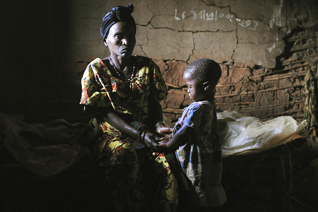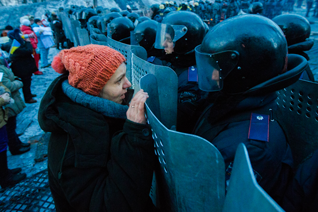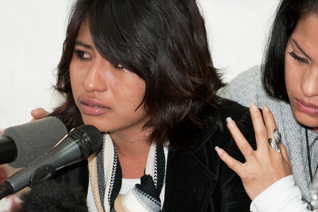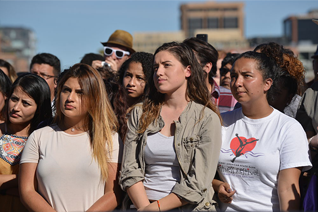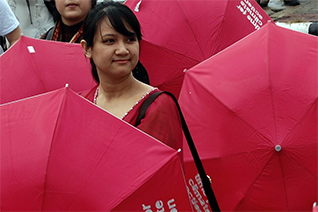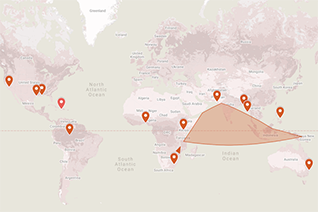Assam floods drive trafficking, child marriage, and women’s ill health
Assam, India—In a primary school classroom, Deepa Das holds back tears as she explains to her 6-year-old daughter why she doesn’t have enough clothes for her. Eight days ago, as heavy monsoon rains lashed the state, Das’ home, which lies in a village behind the school where she is taking shelter, was completely flooded in the space of an hour.
“We were knee-deep in water and had to leave in a hurry with a few belongings,” she said. The family left most of their clothing behind.
Das, a mother of two, is seven months pregnant with her third child. She did not have the chance to pick up the iron-folic acid tablets the doctor had prescribed her, and the ultrasound she had planned for this month seems unlikely now. “I have to force myself to eat here," she said. "I can’t even sleep well at night. I just feel unwell."
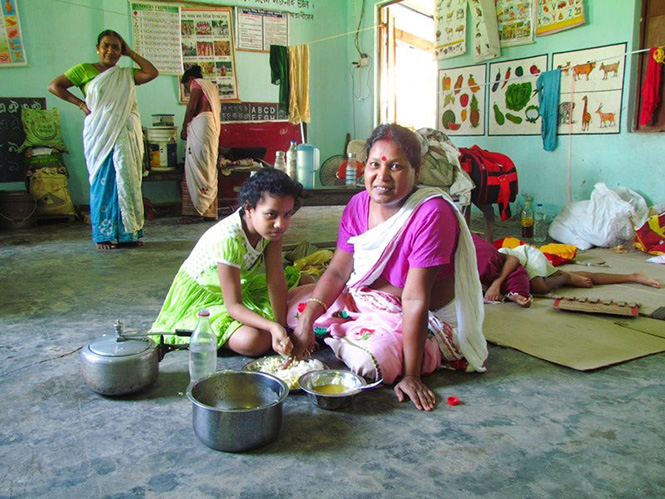
Deepa Das, who is seven months pregnant, worries about her health because of the responsibilities that she will have to shoulder after the floods recede. (Sarita Santoshini)
Das is one of more than 1.7 million people affected by floods in Assam, in northeast India. As of July 25, at least 77 people had lost their lives in the disaster.
In the immediate aftermath of the flood, more than 131,000 people took shelter in 363 relief camps, which include schools and government buildings. Many have now left to rebuild their damaged houses, as water levels recede.
Women are hit hardest Flooding is a regular occurrence in Assam, when the annual monsoon causes the Brahmaputra River to overflow. More than 40 percent of the region is flood-prone, and every year residents are forced to flee to camps. Women and girls are often left vulnerable and receive little support when their lives are affected by flooding. Sometimes they don’t even have access to a relief camp and have no option but to take shelter under tarpaulin sheets along the roads.
“The government provides food rations and medicines to affected people but does not have any special provisions for women,” said Ramananda Agrahari, a civil engineer who is part of the civil town and country planning of Sivasagar district of Assam.
In the school where Das is seeking shelter with 11 other families, there is only one toilet, meaning women have to hurriedly bathe in the open.
During monsoon season, changing weather, intermittent rainfall and humidity cause viral fever in most parts of India. Most women said they were running a fever, as were some of their husbands and children. But unlike their family members, women could not rest because they had to cook, wash clothes and look after their children.
Assam records the highest maternal mortality ratio among all states in India, and during floods many mothers like Das lack access to reproductive healthcare and nutrition.
“Even as their homes and surroundings begin to get flooded, most women continue to stay there to take care of the household and livestock until they are forced to seek shelter,” said Sabita Neog, an ear, nose, and throat specialist who visits flood-affected villages across Assam as part of free medical camps organized by the public enterprise Oil and Natural Gas Corporation Limited every year. “They develop skin eruptions on their feet and legs, and also complain of severe body aches due to added work pressure.”
Most women in these villages, Neog added, are not familiar with sanitary napkins and use cloth during menstruation. “During floods, there is a lack of hygiene as it becomes difficult to wash and dry the cloth materials that they use," she said. "Many women develop vaginal yeast infections, also known as vaginal candidiasis, as a result.”
When the waters drop Once the flood waters recede, it’s women who are solely responsible for rebuilding the family homes as the men go out to work.
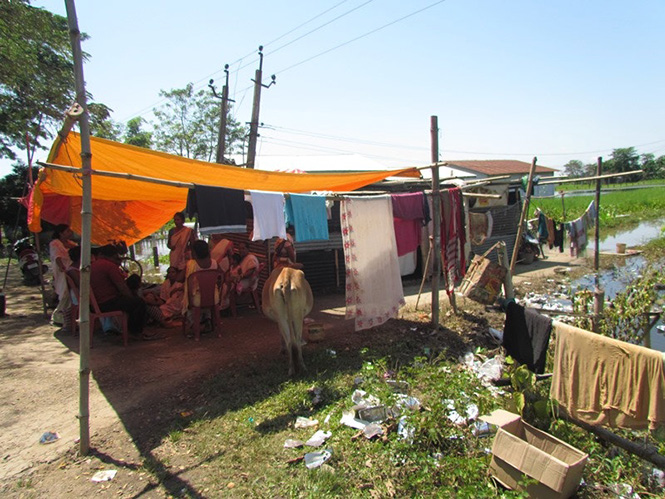
Women take shelter on a road after their village was affected by the floods. (Sarita Santoshini)
“We have to go back and do everything,” said Alpana Saikia, a 30-year-old mother of two. “We’ll clear the roads, cut down fallen trees, fix the damaged mud floors of the house, collect bamboo to build its walls and take care of the livestock.”
“I am worried," Das said, wiping her tears. "I don’t know how I’ll manage.”
There are many longer-term implications for women after flooding. A study into the effect of climate change on women in Assam, which involved 900 households, found that increased flooding and erosion affected the household income of agriculture-dependent families.
To supplement income, many women start working as wage laborers, and young girls drop out of school to either get jobs or take on household chores while their mothers are out working.
“Poverty and the severe effect of floods have increased child labor,” said Tirtha Prasad Saikia, program manager and assistant director of North-East Affected Area Development Society, an NGO that works with marginalized communities in five districts of Assam. “Many young girls in flood-affected villages migrate to urban areas within Assam or to other cities across India in search of work, mainly as domestic labor.”
The number of child marriages also increases: Impoverished families consider it an easy option to provide better futures for their daughters.
Most women in the relief camps said they had married early. Saikia was 16 when she had her first child, a daughter. She does not want the same future for her daughter, but she is worried that the floods will affect her education.
Another mother said she couldn’t afford to send her daughter to college and eventually got her married at the age of 21 this year.
The annual floods have also contributed to a rise in trafficking, as middle-men from trafficking networks lure poverty-stricken families into handing over their children with the prospect of giving them well-paying jobs. The children are then forced into domestic work or prostitution.
Breaking the cycle To end this cycle of poverty and abuse, Saikia, of the North-East Affected Area Development Society, said the region needs more than flood relief. “It takes years for people to rebuild," he said. "Relief support helps women temporarily, [but] what Assam requires is preparedness. Raised toilets and hand pumps should be built so women have better access to sanitation and hygiene. They should be provided community-based training and awareness on disaster-risk management.”
“We cannot stop the floods," he said. "But we can ensure that women are better equipped and supported.”
A version of this article originally appeared on NewsDeeply Women & Girls, and you can find the original here.
More articles by Category: Environment, Health, International
More articles by Tag: Asia, Climate change






